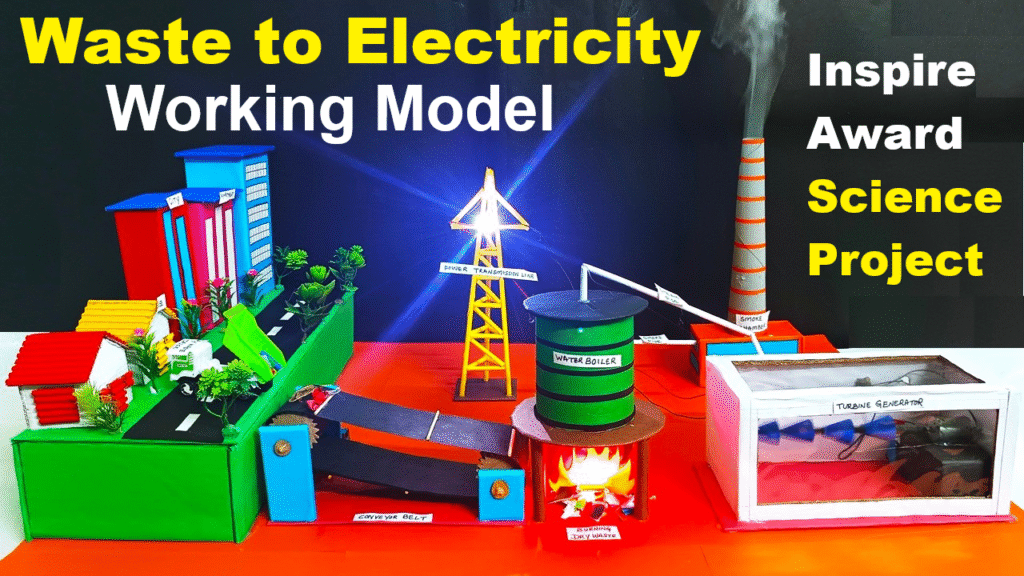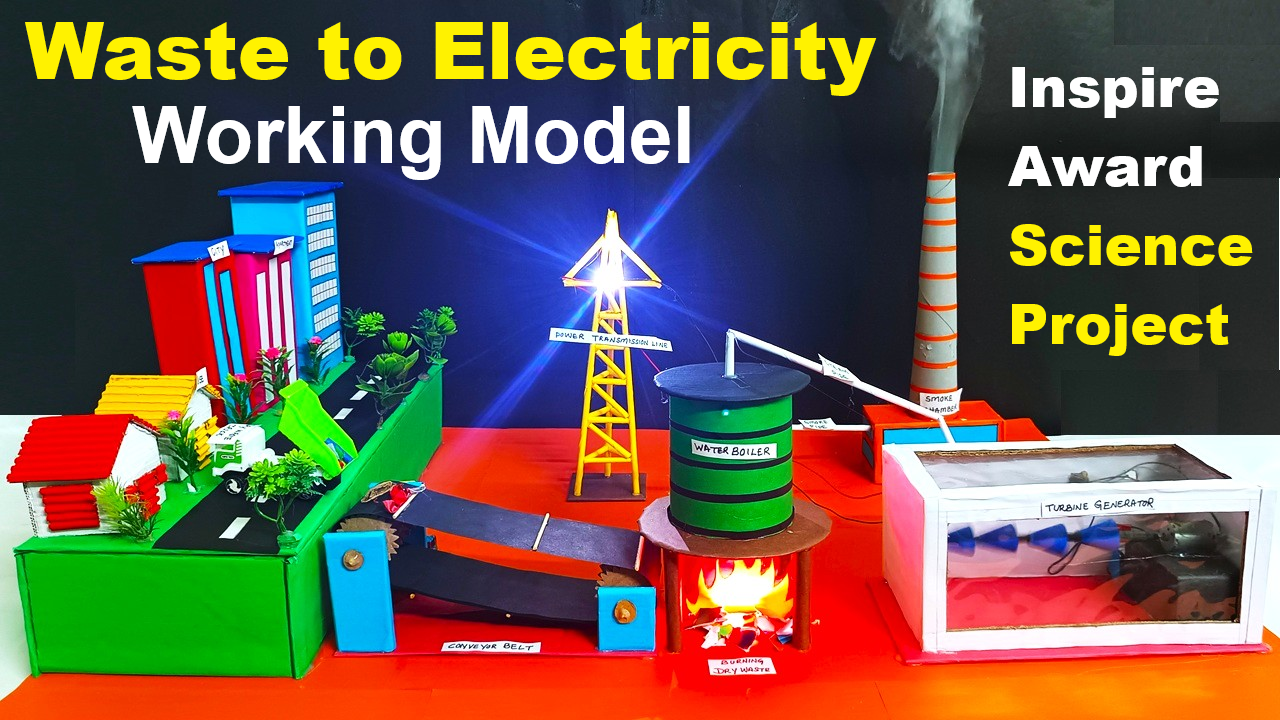Aim / Objective:
To demonstrate how dry waste collected from households and streets can be converted into electricity by burning it to produce steam, which drives a turbine-generator.

Materials Required:
- Cardboard or wooden base (to build the factory)
- Small DC motor (to act as turbine-generator)
- Small boiler or container (to simulate boiler)
- Escalator mechanism (can be made with cardboard, skewers, or small belt)
- LED light (to show electricity generation)
- Plastic or cardboard pieces (to simulate dry waste)
- Tubes or pipes (to simulate steam flow)
- Glue, tape, or adhesive
- Switch and wires
Working Principle:
- Dry waste is collected and fed into the boiler using an escalator or conveyor system.
- Burning the waste produces heat, which converts water in the boiler into steam.
- Steam flows through a turbine (connected to a DC motor), causing it to rotate.
- The rotating turbine generates electricity, which can light up an LED, demonstrating energy conversion from waste to electricity.
Procedure:
- Build a small factory model with cardboard.
- Set up an escalator/conveyor mechanism to move dry waste to the boiler.
- Fix the boiler/container where waste is “burned” (can simulate with a small heat source or just for demonstration).
- Connect a tube from the boiler to a DC motor to represent steam flow to the turbine.
- Connect the DC motor terminals to an LED.
- Place simulated dry waste on the escalator and operate it to deliver waste to the boiler.
- Observe the DC motor rotation and LED lighting to simulate electricity generation.
Observation:
- Dry waste moves along the escalator into the boiler.
- Turbine (DC motor) rotates as if powered by steam.
- The LED glows, demonstrating that energy from waste can be converted into electricity.
- The model shows a clean and efficient method of generating power from household and street waste.
Conclusion:
The waste-to-electricity model demonstrates the principle of energy conversion from dry waste to electricity.
It highlights the importance of waste management, renewable energy generation, and environmental sustainability, showing how urban waste can be transformed into a valuable energy resource.

